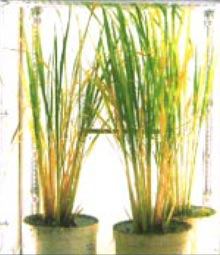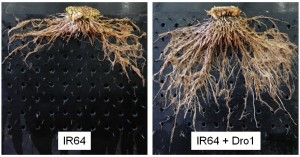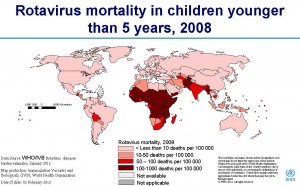In the last week two articles appeared on genetic modifications related to rice. The first involved DRO1, a gene that determines how a rice plant’s roots grow. The second involved the engineering of rice to incorporate ARP1, an antibody naturally found in llamas, the Andes ruminant and distant relative of the camel.
The Significance of DRO1 Rice
A naturally occurring gene found in 60 different rice varieties, DRO1 has been cross bred into shallow-rooted standard rice varieties, the mostly commonly grown rice eaten by nearly half of us on the planet. DR stands for Deeper Rooting. Rice plants with this gene (seen in the picture below on the right) can triple yields during periods of drought.
Rice is particularly susceptible to stress from drought. That’s because it has the shallowest roots of any cereal crop. And with irrigation options limited it is important to look at rice production in drier conditions. This is further exacerbated by the threat of drought from climate change and by the projected growth in human population to more than 9 billion by the year 2050.
Today in India severe drought has historically reduced rice yields by as much as 40%. If such drought conditions become endemic to this part of the world then food security will be impacted. Drought, therefore, is considered the greatest environmental threat to the traditional rice basket of the world, South Asia and China. Rice is also becoming a big part of the diet of Sub-Saharan Africa where the largest growth in population is anticipated over the next 40 years and where climate change is expected to create more frequent droughts.
Research on DRO1 has been conducted by a team of scientists at Japan’s National Institute of Agrobiological Sciences. Their work couldn’t come soon enough.
Why Incorporate ARP1 into Rice?
Diarrhea is a leading cause of death every year according to the World Health Organization. Of the reported 520,000 who succumb to it each year, 85% come from Africa and Asia. The leading cause of diarrhea, the rotavirus, has no impact on llamas. That’s because they have naturally producing antibody resistant to the virus. The antibody is single-chained whereas human antibodies are normally dual-chained. And the best way to deliver the antibody is orally by ingesting it in food.
By incorporating the ARP1 antibody into rice the scientists believe they can deliver a prophylactic therapy to prevent diarrhea. Called MucoRice-ARP1, this transgenic rice if consumed regularly will reduce rotavirus infectivity significantly.
The normal treatment for rotavirus is vaccination but it has proven to be significantly less effective in the Developing World than in the Developed (50-60% versus 85-98%). The ineffectiveness may be caused by weakened immune systems.
On its own the MucoRice-ARP1 is not expected to be substitute for the vaccine but a supplementary prophylactic that can be consumed in cooked rice or be mixed as a powder into water and drunk. Distribution during rotavirus outbreaks could reduce transmission rates. Children under two are the most likely to consume it.
MucoRice-ARP1 has additional benefits over the use of vaccines. The product can be stored for years without losing viability. It requires no refrigeration. And because it is rice it is easily accepted by the population once the benefits are explained.



















You’re doing very useful work here. Thank you:-)
Hi Ruth,
Thank you for the feedback. Technology and science can take us down many roads even within a single field. Some GMO research on transgenics looks to be very much worthwhile. Some seems to pander to marketing and less to solving real challenges. I think a rice that can help reduce diarrheal deaths is a positive contribution.
[…] https://www.21stcentech.com/agriculture-update-genetic-modifications-rice-yields-results/ […]
Nation’s Best IAS Coaching Centre
http://www.pragnyaias.com
IAS Online Coaching
http://www.upsccivilservices.com